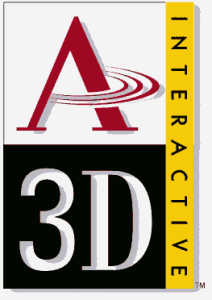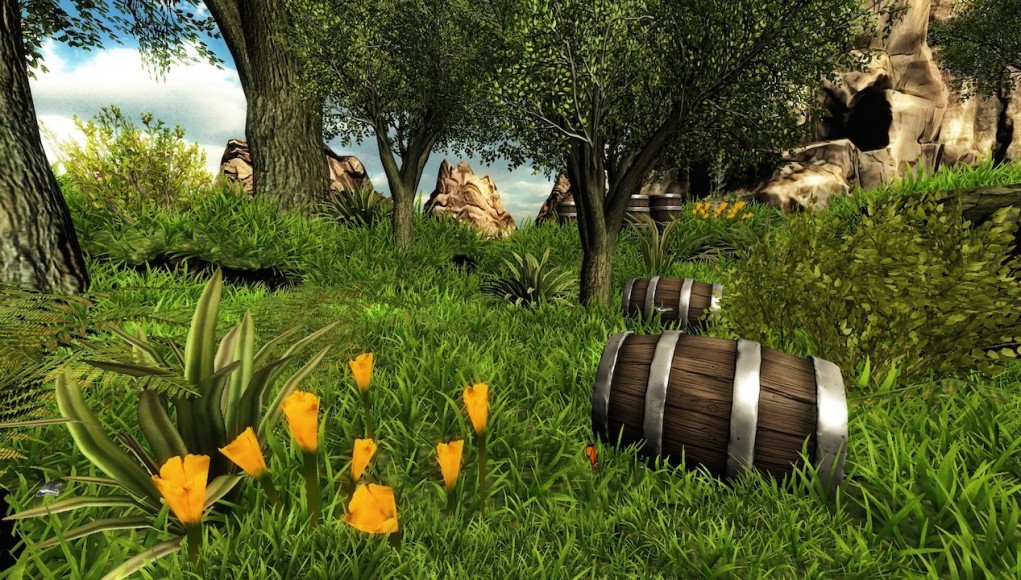Whatever Happened to Aureal 3D?
So why has game audio technology stayed so static? Mariančík has a theory; “Of course there’s still a way to go for the audio solutions – the problem is that a lot of the methods that allow for even more realistic sound (like the wavetracing, where you have another copy of the scene made from audio polygons with audio materials, instead of just a box) are covered with patents, so it kind of slows progress there.”
One of the first companies to pioneer progressive positional, natural sounding audio processing technology was Aureal Semiconductor. Their Aureal 3D system was to form the unique selling point of the company’s Vortex line of PC sound cards in the late 90s. Singapore based Creative Technology were of course the heavyweights of the PC sound card back then with their Soundblaster product practically becoming synonymous with PC sound and music.
 Aureal’s approach to enhance game audio was ambitious and impressive. Utilising geometry lifted from the game itself, Aureal 3D calculated the path sound waves travelled and how they reflected off surfaces in the virtual world before reaching your avatar’s position in that world. It was one of the first uses of HRTF (Head-related transfer functions), a somewhat unhelpful acronym which refers to methods your brain uses to detect audio delays in the environment and property changes that your brain uses to judge relative distance between it and the sound’s source. ITD (Inter-aural Time Delay: the correlation of time delay between sounds reaching each of our ears) and HRTF are used by our brains to build a surprisingly accurate aural landscape of the world. Unsurprisingly, emulating these cues can be extremely effective at convincing the brain it’s somewhere it’s not. Also unsurprisingly, the workload to calculate audio like this is higher than just slapping on some DSP effects.
Aureal’s approach to enhance game audio was ambitious and impressive. Utilising geometry lifted from the game itself, Aureal 3D calculated the path sound waves travelled and how they reflected off surfaces in the virtual world before reaching your avatar’s position in that world. It was one of the first uses of HRTF (Head-related transfer functions), a somewhat unhelpful acronym which refers to methods your brain uses to detect audio delays in the environment and property changes that your brain uses to judge relative distance between it and the sound’s source. ITD (Inter-aural Time Delay: the correlation of time delay between sounds reaching each of our ears) and HRTF are used by our brains to build a surprisingly accurate aural landscape of the world. Unsurprisingly, emulating these cues can be extremely effective at convincing the brain it’s somewhere it’s not. Also unsurprisingly, the workload to calculate audio like this is higher than just slapping on some DSP effects.
One of the original demonstrations of Aureal 3D can be be heard in the video below – best watched using headphones.
By contrast, Creative’s competing EAX (Environmental Audio Extensions) technology was a much simpler, less pure and less effective approach. Early EAX was essentially a collection of DSP algorithms which emulated reverberation in a very generalised way. So, sound was processed based on this one preset per ‘room’ but none of the objects within them. Most games opted to use pre-baked presets for different environment types, which lead to lazy and inaccurate implementations in games of the time.
 Creative, recognising Aureal had a product that could challenge its dominance, launched a lawsuit claiming Aureal had infringed patents in March of 1998. This is a snippet from an Aureal press release at the time:
Creative, recognising Aureal had a product that could challenge its dominance, launched a lawsuit claiming Aureal had infringed patents in March of 1998. This is a snippet from an Aureal press release at the time:
The suit alleges that Aureal’s Vortex 8820 AC’97 Digital Audio Processor infringes United States Patent No. 5,342,990 entitled “Digital Sampling Instrument Employing Cache-Memory” which describes a specific implementation for an electronic musical instrument designed by E-MU Systems, Inc.
Aureal counter-sued Creative and ultimately won the case. Sadly though,crippling legal costs forced the firm into bankruptcy, leaving the predatory Creative to acquire Aureal in its entirety. Creative then shut its one time competitor down, burying most of its technology.
It’s a fairly sad tale of superior technology being beaten by sheer corporate muscle and an apt reminder that in the world of technology, the best ideas are not always the ones which gain a foothold in our every day lives.
3DCeption – Optimised Positional Audio Engine
3DCeption is an immersive audio engine from Edinburgh based technology company Two Big Ears. Founded in 2013, their focus is on providing positional and 3D audio solutions for mobile and ’emerging technologies’, labels that can both be applied to virtual reality. Their 3DCeption engine and API is available as a plugin for the popular Unity 3D game engine and the company claims that their engine, currently in beta, is up to 4 times faster than competing engines on the market now.
Co-Founder Varun Nair, veteran Sound Designer of 7 years and over 400 projects, had this to say about the future for game audio, and in particular VR:
I’m sure the technology for audio in VR is going to progress far — we are hard at work and so are all the other players. But, we are very keen to see and help progress the sound design language for VR. There’s so much to explore.
The beta plugin is currently available free for a limited time to developers interested in giving it a whirl, which is an encouraging incentive to try and get more companies and developers integrating compelling positional audio in their games, especially ones based in VR.
Our thanks to Tomas for his time and his thoughts. You can find more on Sightline over at the website here. Two Big Ears and 3DCeption can be found here.







